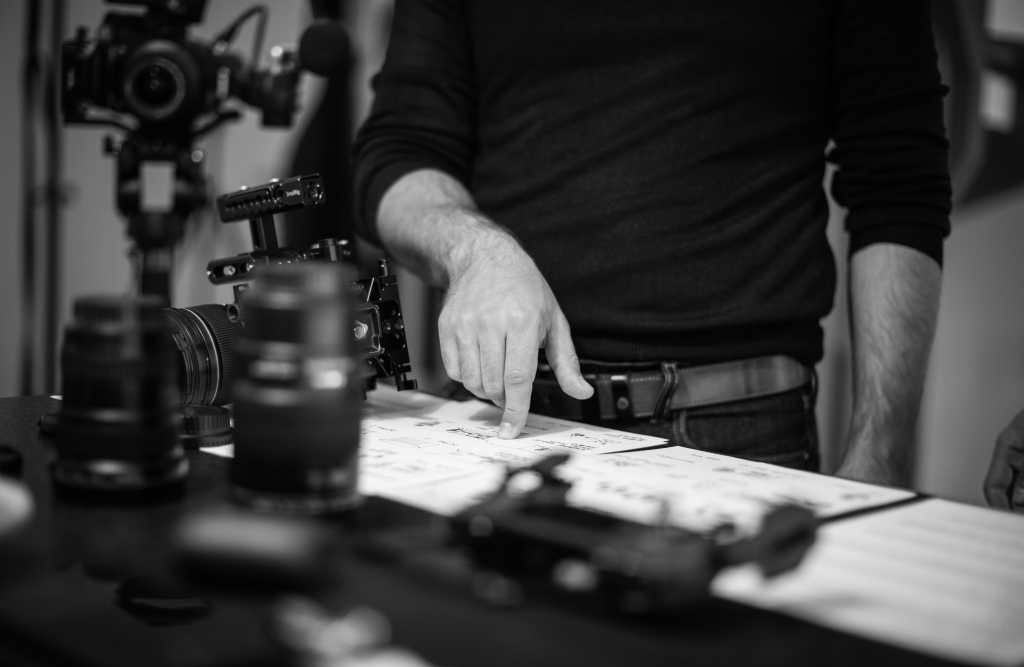How to Storyboard a Video – 2025 Guide

How to Storyboard a Video – 2025 Guide
Got a video idea for your brand but have no idea where to start? Let us introduce you to video storyboarding.
Whether you want to film a product review for a dog toy or an informative animation about addiction, video storyboarding is the perfect way to nail down your idea.
In this article, we break down what a storyboard is, why it’s an important tool and how to storyboard a video.
What is a Storyboard?
A storyboard is a visual outline made of sketches, illustrations and any other images that create a scene-by-scene breakdown of your video. Each scene is broken down into panels, which are numbered to give a chronological order to your video storyboard.
They can be as detailed or basic as you like. For example, if you struggle to draw, sketching stick figures is fine. Don’t be worried that your storyboard has to be aesthetically appealing or extremely detailed; its primary purpose is to solidify and communicate your ideas to yourself and others.
The Different Types of Storyboards
As we have highlighted, storyboards can contain varying levels of detail, like camera shots and angles or background settings. There are three different types of storyboards you can use that are suitable for heavier details or simpler designs:
- Traditional Storyboards - Typically using pen and paper, traditional storyboards use a series of boxes containing rough sketches with text underneath that explains what’s happening in the scene. There are, of course, some pros and cons of using paper. It’s easily accessible and a cheap option, but hard to revise and less collaborative.
- Thumbnail Storyboards - Also hand-drawn, these storyboards do not include text but rely fully on detailed sketching to illustrate what is happening in the scene. This gives others a more precise representation of the video’s play-by-play.
- Digital Storyboards - As the name suggests, there’s no pen and paper involved here. Digital storyboards stick to the structure of a traditional storyboard, but use digital and design software, like Adobe Illustrator, instead. Using online software means you can effortlessly edit images and create alongside others. However, the software required to create a digital storyboard is expensive.
So, which type of storyboard you choose to use depends on your budget and the size of your project.
The Benefits of Using Storyboards
To start, video storyboarding allows you to brainstorm your ideas and confirm what type of video you want to film, your goals for the video, and the content that would hook your audience. Making a storyboard allows you to troubleshoot your idea, too, and consider both your budget and availability of equipment, props and sets. Being able to plan for the practical elements of your video makes your idea feel more thoughtful and impressive when presenting to clients.
Using storyboards also streamlines the production process, saving you time down the line. They give you a strong notion of the style of filming you want to achieve, as well as the different shots you want to capture. Essentially, storyboarding is a really effective way to plan your video’s main storyline and the finer details required to film it.
How to Storyboard a Video
If you have never created a video storyboard before, it can feel like an intimidating task. But, by breaking it down into the steps we’ve outlined below, your idea will soon grow into a fully fledged plan:
- Write Your Ideas Down - A simple but effective way to start. Nailing down the message you want your video to convey, along with its talking points and key takeaways, is the most important part of the process. Without this step, your video may end up confusing and unsuccessful.
- Create a Draft - Write a rough draft of your script and start building your board. Use a standard storyboard template, available for free in Photoshop, PowerPoint or Word, and input your script. Doing this will start to give you a feel for the scene order of your video.
- Get Sketching - Start illustrating in each box or panel. Aim to create a mostly self-explanatory image by including all of the relevant characters, the background setting and props. Approach this step by ‘scamping’, which is turning your script from something written into something visual; your sketches here should be rough, messy and raw rather than polished and detailed.
- Add Details - Now think about technical details, like the direction the camera will move, the time of day and adding depth to your background with layering. Use up, down, left, right and diagonal arrows to indicate movement, including the camera zooming in and pushing out.. Say, for example, you are storyboarding for an outdoor athletic wear company’s video about someone reaching the top of a mountain. Think about whether there will be faded hills in the background. Also consider continuity; after your character has climbed a mountain, they should be visibly sweating or red-faced.
- Gather Feedback - Once you have finished your storyboard, go through a video-making checklist and ensure you have included all the relevant details mentioned above. It’s also important to gather feedback from your team; a fresh pair of eyes could point out if anything is missing or if there are any changes they would make.
Storyboard Your Video with Reel Film
At Reel Film, we put video at the heart of your business. As qualified and creative film fanatics, we would love to build you a video storyboard that carefully considers the aims of your video and highlights how your brand stands out. Have a look at the award-winning videos we have created across a wide range of sectors, or contact us today to enquire about producing a professional video for your brand.
